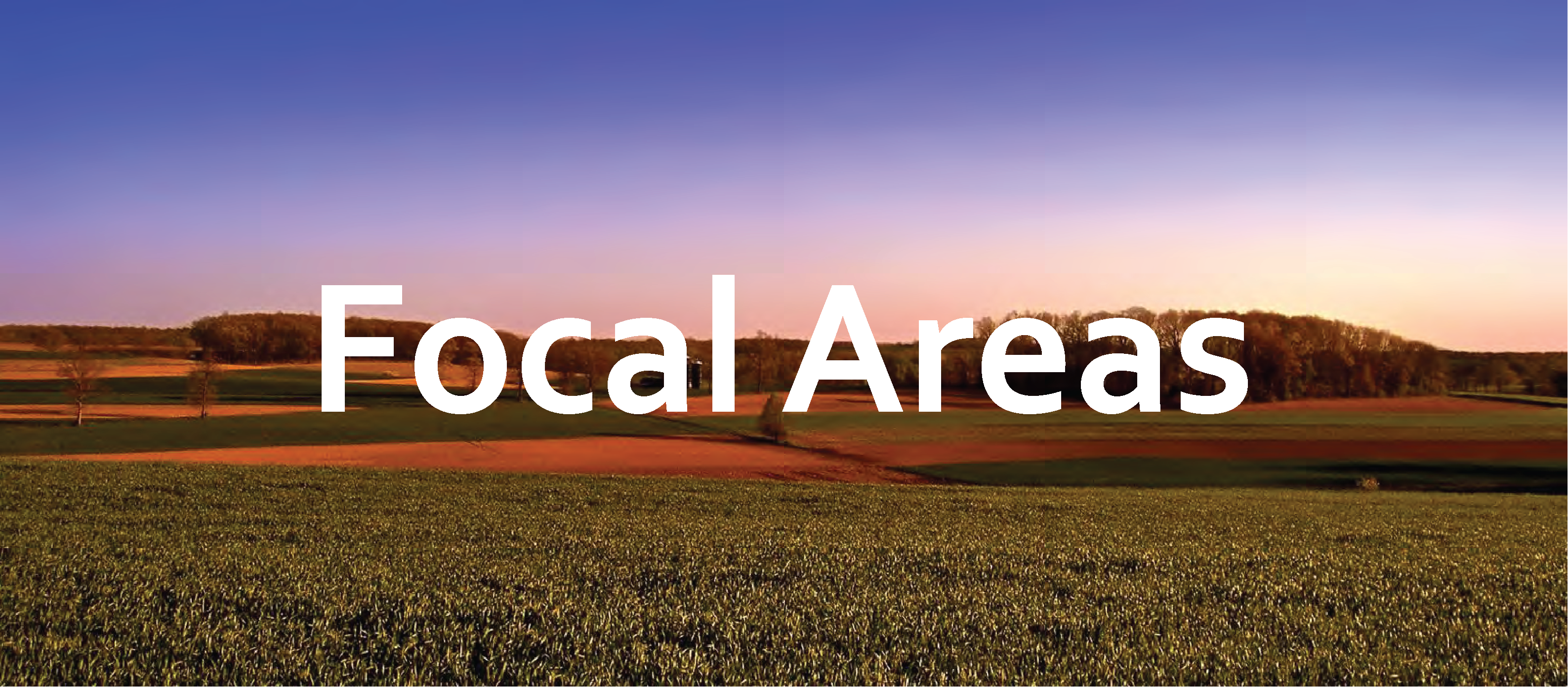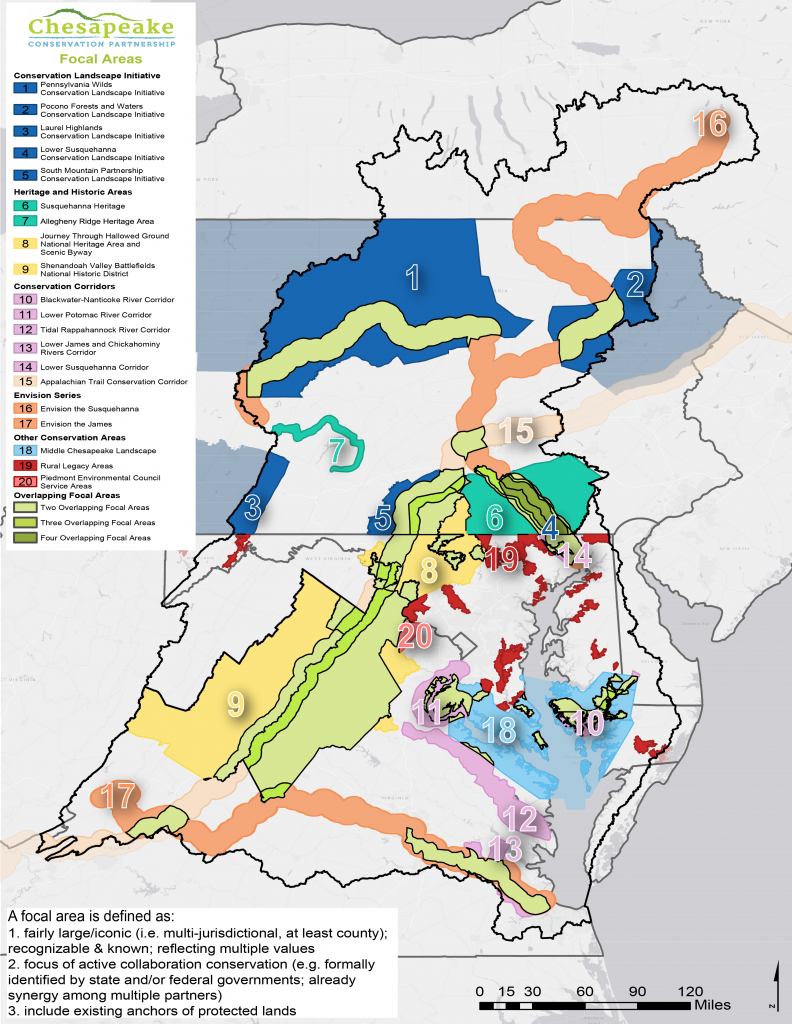Where are the existing focal areas of conservation work within the Chesapeake watershed? In other words, where are the landscapes that already have an on-going recognized, dedicated effort to conserve additional lands?
This map illustrates landscapes within the Chesapeake watershed are the focus of current large-scale collaborative conservation efforts. They have the following characteristics:
- They are fairly large and iconic in their own right (i.e. multijurisdictional, at least at the county level; recognizable and known as a landscape unit; reflecting multiple values (natural, cultural, historical, recreational);
- They are the focus of active collaborative conservation efforts (e.g. designated or formally recognized by state and/or federal governments; already synergy among multiple partners engaged in conservation and related activities; demonstrated capacity for active collaboration); and
- They include existing anchors of protected land from which to build.
There may be opportunities for leveraging and amplifying conservation work in these locales due to their existing capacity. Simultaneously, we should look at important conservation values not represented by these focal areas and ask “what needs to be done to bring about the kind of capacity these focal areas already have.
It is likely this map is incomplete and that there are additional landscapes meeting our focal area definition. Additional existing focal areas should be identified and included, to capture a full range of conservation efforts and their overlaps.
For more information and to explore the map featured below further, please visit https://www.landscope.org/chesapeake/chesapeake_map_layers/conservation_priorities/chpk_focalareas/27778/.


